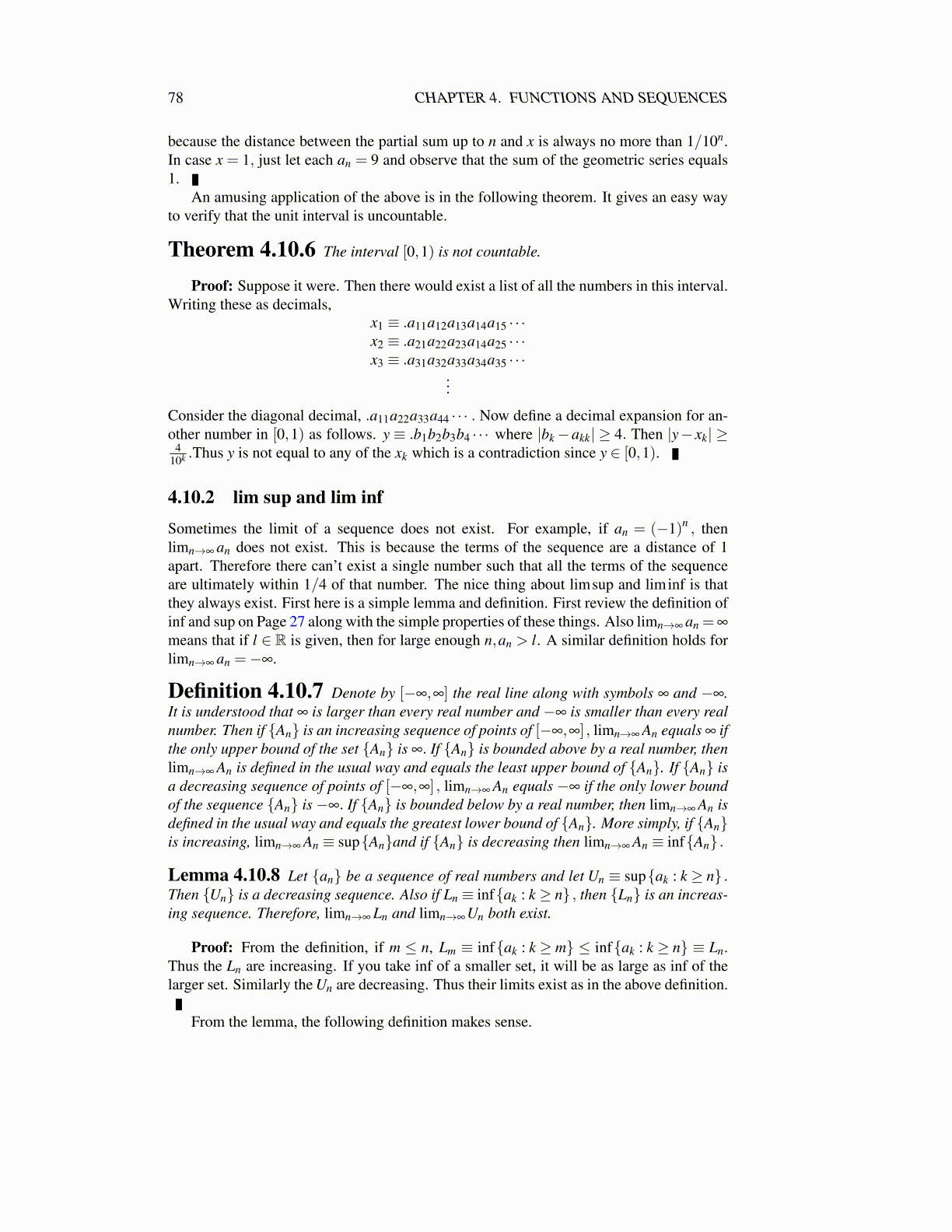
78 CHAPTER 4. FUNCTIONS AND SEQUENCES
Proposition 4.10.13 Let limn→∞ an = a > 0 and suppose each bn > 0. Then
lim supn→∞
anbn = a lim supn→∞
bn.
Proof: This follows from the definition. Let λ n = sup{akbk : k ≥ n} . For all n largeenough, an > a− ε where ε is small enough that a− ε > 0. Therefore,
λ n ≥ sup{bk : k ≥ n}(a− ε)
for all n large enough. Then limsupn→∞ anbn = limn→∞ λ n ≡
lim supn→∞
anbn ≥ limn→∞
(sup{bk : k ≥ n}(a− ε)) = (a− ε) lim supn→∞
bn
Similar reasoning shows limsupn→∞ anbn ≤ (a+ ε) limsupn→∞ bn. Now since ε > 0 is ar-bitrary, the conclusion follows.
4.10.3 Shrinking DiametersIt is useful to consider another version of the nested interval lemma. This involves a se-quence of sets such that set (n+1) is contained in set n and such that their diametersconverge to 0. It turns out that if the sets are also closed, then often there exists a uniquepoint in all of them. This is just a more general version of the nested interval theorem whichholds in the context that the sets are not necessarily intervals.
Definition 4.10.14 Let S be a nonempty set. Then diam(S) is defined as
diam(S)≡ sup{|x− y| : x,y ∈ S} .
This is called the diameter of S.
Theorem 4.10.15 Let {Fn}∞
n=1 be a sequence of closed sets in Fp such that
limn→∞
diam(Fn) = 0
and Fn ⊇ Fn+1 for each n. Then there exists a unique p ∈ ∩∞k=1Fk.
Proof: Pick pk ∈ Fk. This is always possible because by assumption each set is non-empty. Then {pk}∞
k=m ⊆ Fm and since the diameters converge to 0 it follows {pk} is aCauchy sequence. Therefore, it converges to a point, p by completeness of Fp. Since eachFk is closed, it must be that p ∈ Fk for all k. Therefore, p ∈ ∩∞
k=1Fk. If q ∈ ∩∞k=1Fk, then
since both p,q ∈ Fk, |p−q| ≤ diam(Fk). It follows since these diameters converge to 0,|p−q| ≤ ε for every ε. Hence p = q.
A sequence of sets, {Gn}which satisfies Gn ⊇Gn+1 for all n is called a nested sequenceof sets.
The next theorem is a major result called Bair’s theorem. In fact, you just need thecontext of a complete metric space but we are emphasizing Fp here.
Definition 4.10.16 An open set U ⊆ Fp is dense if for every x ∈ Fp and r >0,B(x,r)∩U ̸= /0.